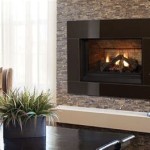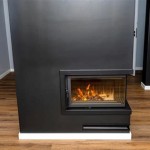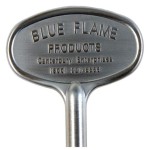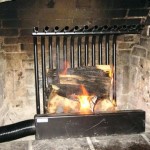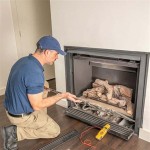Propane Gas Fireplace Inserts: A Comprehensive Guide
Propane gas fireplace inserts offer a convenient and efficient alternative to traditional wood-burning fireplaces. They provide the ambiance and warmth of a fire without the hassle of wood sourcing, stacking, and ash removal. This article delves into the various aspects of propane gas fireplace inserts, examining their benefits, installation considerations, operation, maintenance, and cost factors.
Understanding Propane Gas Fireplace Inserts
A propane gas fireplace insert is essentially a self-contained heating unit designed to fit into an existing fireplace opening. Unlike traditional wood-burning fireplaces, which can be inefficient and contribute to indoor air pollution, propane inserts utilize a controlled gas flame to generate heat. These inserts are typically enclosed within a metal firebox, often featuring a ceramic or refractory lining to enhance heat retention and distribution. The exterior is usually designed to mimic the appearance of a traditional fireplace, with realistic-looking logs and decorative elements.
Propane inserts operate by burning propane gas, which is supplied either from a portable propane tank or a direct gas line connection. A control valve regulates the gas flow, and an ignition system, typically electronic, ignites the gas to produce the flame. The generated heat is then radiated into the room, or circulated through a blower system in some models, providing supplemental heating.
These inserts are available in various sizes and designs, catering to different fireplace openings and aesthetic preferences. Models range from basic, utilitarian units to more elaborate designs featuring intricate detailing and advanced features. The choice of an insert depends on factors such as the size of the fireplace, the desired heat output, and the homeowner's budget.
Safety is a paramount concern in the design and operation of propane gas fireplace inserts. They are equipped with safety features such as oxygen depletion sensors (ODS) that automatically shut off the gas supply if oxygen levels in the room drop to unsafe levels. This prevents carbon monoxide poisoning, ensuring the safety of occupants.
Benefits of Propane Gas Fireplace Inserts
Propane gas fireplace inserts offer several advantages over traditional wood-burning fireplaces, making them a popular choice for homeowners seeking a convenient and efficient heating solution.
Efficiency: Wood-burning fireplaces are notoriously inefficient, with a significant portion of the heat escaping up the chimney. Propane inserts, on the other hand, boast much higher efficiency ratings, typically ranging from 70% to 85%. This means that more of the heat generated by the propane combustion is directed into the room, reducing energy waste and lowering heating costs.
Convenience: Propane inserts eliminate the need for sourcing, stacking, and storing firewood. They also eliminate the messy cleanup associated with wood-burning fireplaces, such as ash removal. With a propane insert, starting a fire is as simple as flipping a switch or pressing a button.
Cleanliness: Wood-burning fireplaces produce smoke, soot, and creosote, which can contribute to indoor air pollution and pose a fire hazard. Propane inserts burn much cleaner, producing minimal emissions. This reduces the risk of chimney fires and improves indoor air quality.
Control: Propane inserts offer precise control over the flame height and heat output. Many models feature adjustable thermostats that allow users to maintain a consistent room temperature. This level of control is not possible with traditional wood-burning fireplaces.
Aesthetics: Propane inserts are available in a wide range of styles and designs, allowing homeowners to choose an insert that complements their existing decor. Realistic-looking logs and flickering flames create a cozy and inviting ambiance.
Installation Considerations
Proper installation is crucial for the safe and efficient operation of a propane gas fireplace insert. It is highly recommended that installation be performed by a qualified and licensed professional who is familiar with local building codes and safety regulations.
Chimney Inspection: Before installing a propane insert, the existing chimney should be thoroughly inspected to ensure that it is in good condition and free from obstructions. Any necessary repairs or modifications should be completed before installation.
Gas Line Connection: If the insert is to be connected to a direct gas line, the gas line must be properly sized and installed to meet the insert's gas consumption requirements. A shut-off valve should be installed near the insert for safety and maintenance purposes.
Venting: Propane inserts require proper venting to exhaust combustion gases safely. The venting system must be compatible with the insert and installed according to the manufacturer's instructions. Incorrect venting can lead to carbon monoxide poisoning.
Electrical Connection: Some propane inserts require an electrical connection to power the ignition system, blower, and other features. The electrical wiring must be properly installed and grounded to ensure safety.
Clearances: The insert must be installed with proper clearances from combustible materials, such as walls, mantels, and furniture. These clearances are specified by the manufacturer and should be strictly adhered to.
Permit Requirements: In many jurisdictions, a building permit is required for the installation of a propane gas fireplace insert. It is important to check with local authorities to determine permit requirements before starting the installation process.
Operation and Maintenance
Operating and maintaining a propane gas fireplace insert is relatively straightforward, but it is essential to follow the manufacturer's instructions to ensure safe and efficient operation.
Startup and Shutdown: Starting a propane insert typically involves flipping a switch or pressing a button to ignite the pilot light and then adjusting the flame height to the desired level. Shutdown is equally simple, usually involving turning off the gas control valve.
Pilot Light: The pilot light is a small flame that continuously burns to ignite the main burner. It is important to ensure that the pilot light is burning properly and is free from obstructions. If the pilot light goes out frequently, it may indicate a problem with the gas supply or the insert itself.
Cleaning: Regular cleaning is essential to maintain the appearance and efficiency of the insert. The glass door should be cleaned periodically with a glass cleaner specifically designed for fireplaces. The logs can be dusted with a soft brush to remove any accumulated debris.
Venting System Inspection: The venting system should be inspected annually by a qualified professional to ensure that it is free from obstructions and is functioning properly. Any necessary repairs or cleaning should be performed promptly.
Professional Servicing: It is recommended to have the propane insert professionally serviced at least once a year. A qualified technician can inspect the insert for any potential problems, clean the burner assembly, and ensure that all safety features are functioning properly.
Cost Factors
The cost of a propane gas fireplace insert can vary depending on several factors, including the size, style, features, and installation costs. It is important to consider all these factors when budgeting for a propane insert.
Insert Cost: The cost of the insert itself can range from several hundred dollars to several thousand dollars, depending on the model and features. Basic models with limited features typically cost less than more elaborate models with advanced features such as remote control, adjustable thermostats, and blower systems.
Installation Costs: Installation costs can vary depending on the complexity of the installation and the local labor rates. A simple installation involving a direct gas line connection and minimal modifications may cost a few hundred dollars, while a more complex installation involving extensive modifications or a new gas line may cost several thousand dollars.
Venting Costs: Venting costs can also vary depending on the type of venting system required and the complexity of the installation. A simple venting system may cost a few hundred dollars, while a more complex venting system may cost several thousand dollars.
Operating Costs: Operating costs will depend on the price of propane and the frequency of use. Propane prices can fluctuate depending on market conditions, so it is important to factor in these fluctuations when estimating operating costs. Regular maintenance will also contribute to operating costs.
Long-Term Savings: While the initial cost of a propane insert may seem significant, it is important to consider the long-term savings in terms of energy efficiency and reduced fuel costs. Propane inserts are typically more efficient than wood-burning fireplaces, resulting in lower heating bills over the long term.

Gas Fireplace Insert Propane Regency Vermont Castings Napoleon

Enviro E Series Gas Or Propane Insert Fireplace Fireplaces By Cameron

Bluegrass Living 34 In W 32000 Btu Black Vent Free Dual Burner Gas Fireplace Insert And Remote The Inserts Department At Com

Propane Fireplace Inserts Gas Log Sets Tunkhannock Pa Ace Robbins

Duluth Forge 27 In W 26000 Btu Black Vent Free Dual Burner Gas Fireplace Insert The Inserts Department At Com

Gas Fireplace Inserts Napoleon Fireplaces

Gas Propane Fireplace Inserts

Propane Gas Fireplace Inserts Delivered Installed In Ct Works

Inserts Gas Kingsman Direct Vent Fireplace Insert Millivolt Propane Idv36lp

Why Install A Propane Fireplace Paraco Gas
Related Posts

